A2 raw milk: A1 versus A2 beta-casein, drinking raw milk benefits, and best dairy cow breeds.
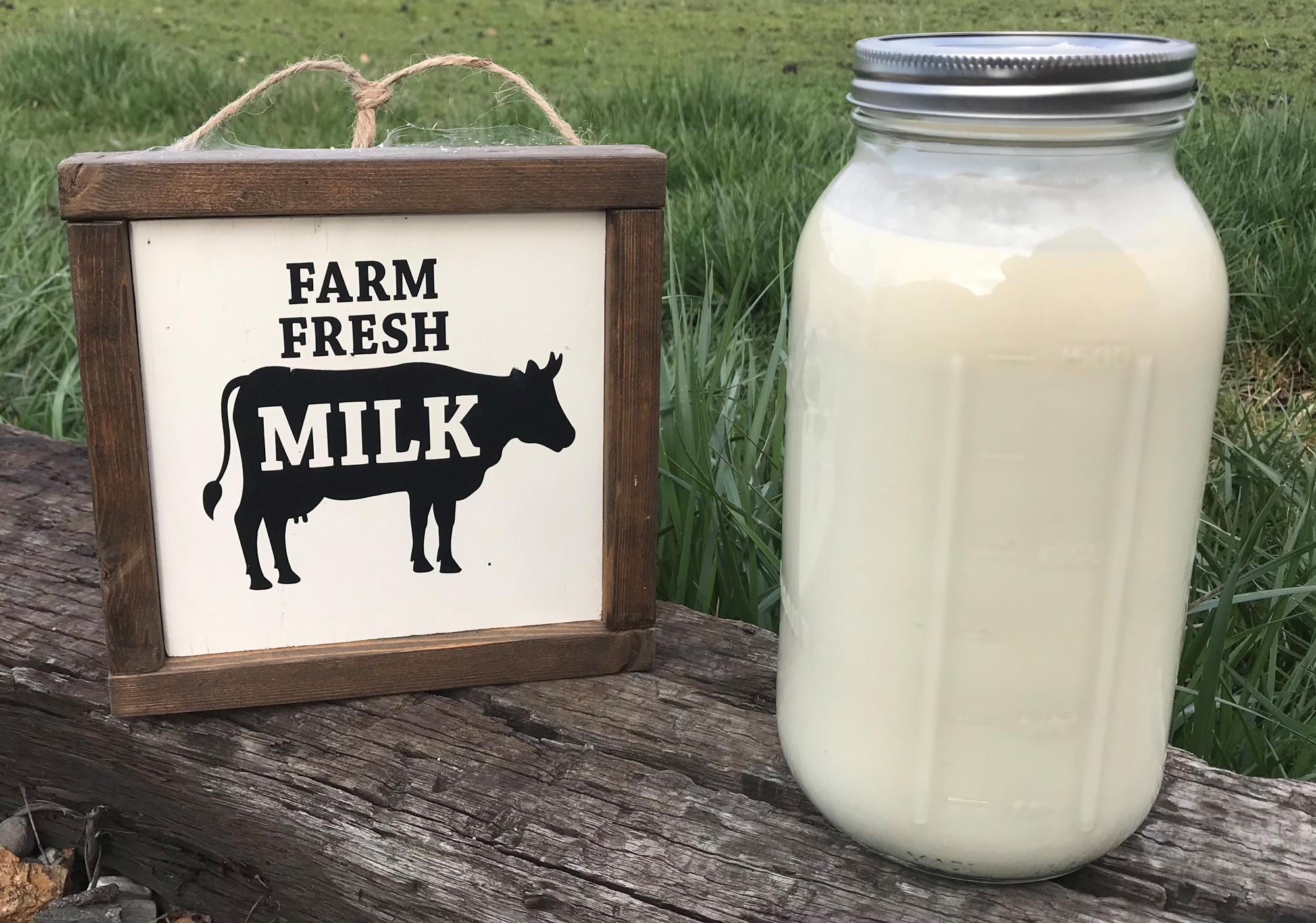
A2 raw milk is becoming much more in demand these days as people learn about the problematic A1 beta-casein protein found in A1 milk.
A1 beta-casein is a milk protein that may be a problem for some that drink raw milk for its health benefits.
Although, drinking raw milk benefits will still be found in A1 raw milk. It's just something you will have to consider along with how the cow was raised and how the milk was processed.
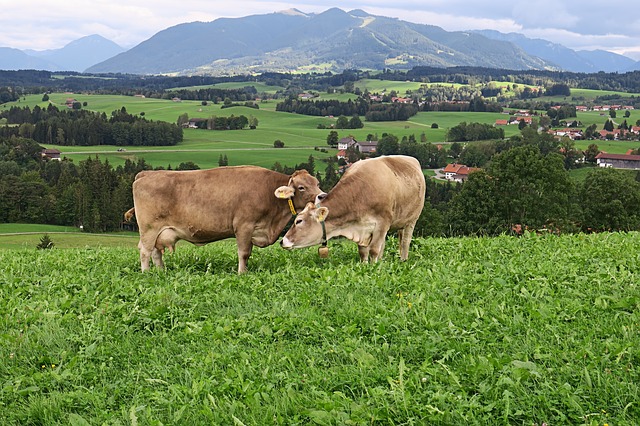
Did you know that lactating cows are incredibly important for re-building the soil?
And the most nutrient dense raw milk will come from healthy cows that are grazing on healthy pastures. Please keep this in mind when purchasing raw milk along with the A1 beta-casein protein factor.
The A1 beta-casein protein versus A2: why A2 raw milk is better for you and how we ended up with A1 milk.
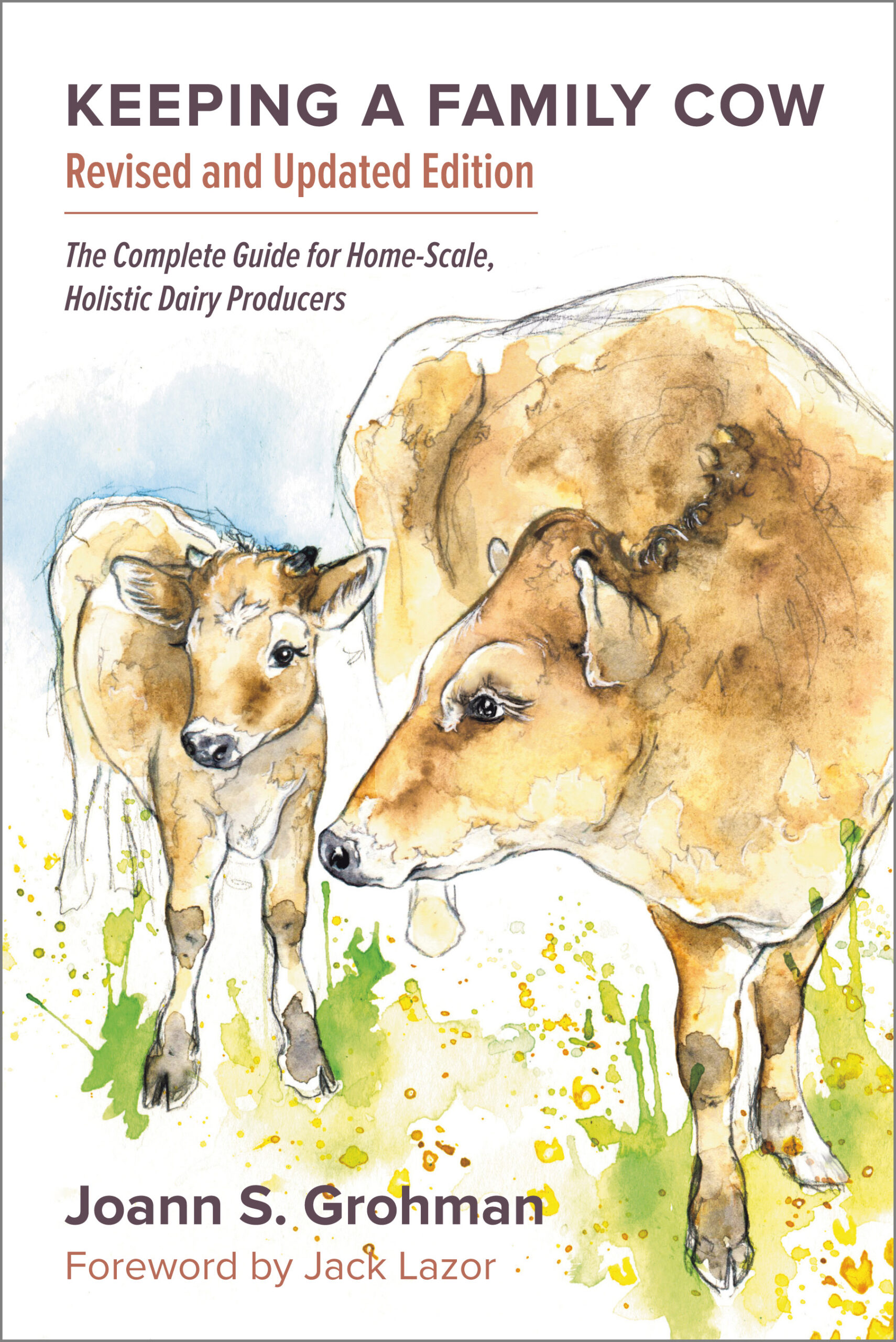
I began to look into why A2 raw milk was better than A1 raw milk around the year 2017.
I happened to come across a book at one of the farms we stayed at for a few months called, "Keeping a Family Cow" by Joann S. Grohman.
At the time I understood that A2 raw milk was better for you, but I really didn't know why until I read that book.
This book helped me to understand that a specific milk protein may create a problem for some people.
The A1 beta-casein protein appears to be the problem.
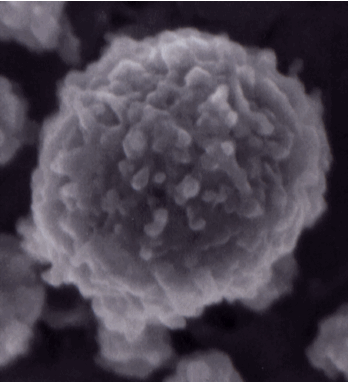
It all centers around the milk protein called casein which exists in alpha, beta, and kappa forms. All are present in every cow.
Casein will be the majority of the protein that's found in cow's milk which equates to about 70 to 80%.
The difference between A2 raw milk and A1 raw milk is in the beta-casein.
Beta-casein is a chain of 229 amino acids and there is a slight difference in position 67 between A2 and A1 cows.
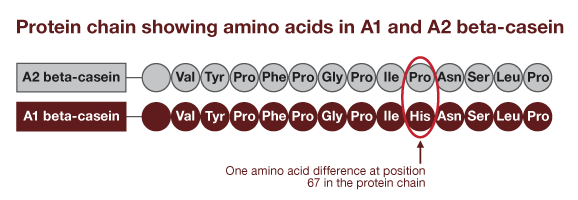
In the A2 beta-casein, the amino acid proline is found in position 67 and it has a strong bond with the amino acid isoleucine or Ile which is in position 66.
In the A1 beta-casein, the amino acid histidine is found in position 67 and it has a weak bond with isoleucine.
An opioid is released during the digestion of the A1 beta-casein protein!
The problem appears to arise during the digestion of the weak bond between histidine and isoleucine in A1 milk.
A peptide called BCM-7 (beta-casein morphin) is released and this peptide has opioid or narcotic properties.
- This peptide is not released during the digestion of A2 raw milk.
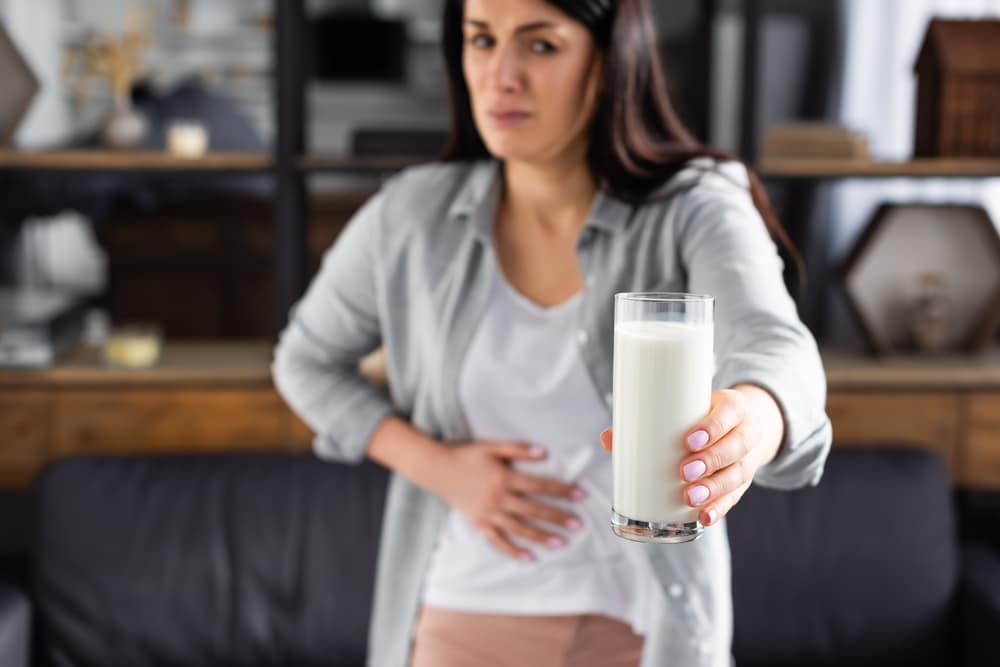
BCM-7 may be responsible for a wide range of intolerances or symptoms in certain people.
BCM-7 is know to attach to receptors in the intestines that control peristaltic movement of food.
Basically, BCM-7 slows down the digestion
of food and it has also been linked to diabetes, heart disease, autism, and inflammation.
- Many people are starting to realize that the reason they had such a bad reaction to drinking milk wasn't from the lactose after all - it was from the BCM-7 opioid peptide.
Please remember other factors like the quality of feed, quality of care, and whether the milk was heat processed still all matter.
Some people argue that these factors are more important in order to receive the benefits of drinking raw milk than the A2 beta-casein factor.
Did you know most cows have both the A1 and A2 beta-casein protein?
It's thought that the A1 gene mutation happened thousands of years ago in Europe and that this mutation produced a new type of beta-casein protein called A1.
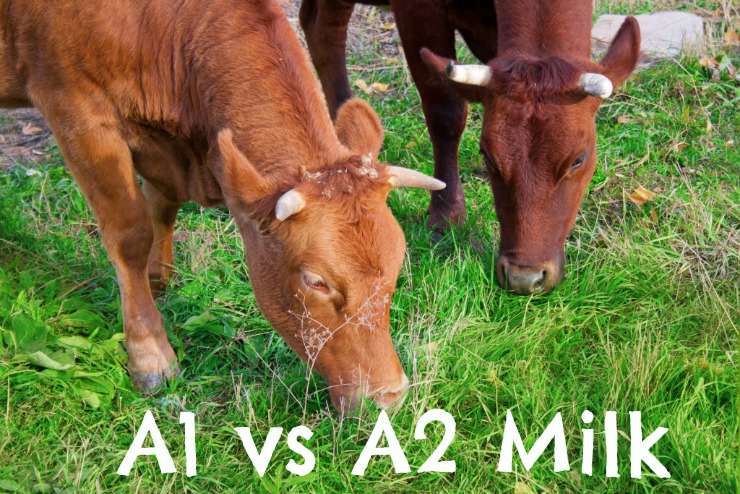
Before the mutation all cows were A2. Now cows can be A1/A1, A1/A2, or A2/A2.
Most of the milk you'll find these days will be a combination of A1 and A2 beta-casein proteins.
If you have dairy cows, you can have them tested to see if they are purely A2 with a simple genetic test that involves a hair sample.
Please keep in mind, there are more factors to consider in order to get the full benefits of drinking a glass of raw milk.
Drinking raw milk benefits: nutrition in raw milk, pasteurization, homogenization, types of pasteurization, and other factors.
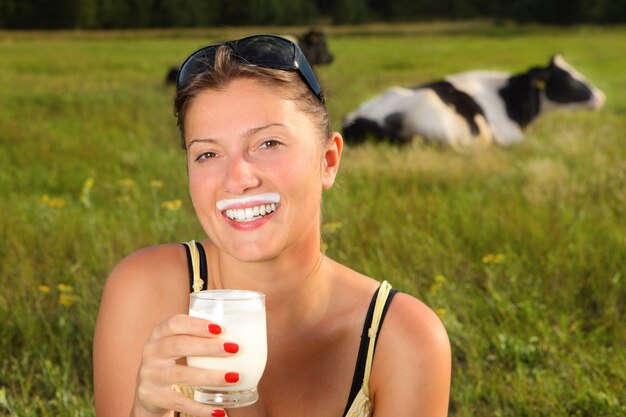
Raw milk provides healthy fats and bio-available protein that your body needs to stay healthy.
On the other hand, pasteurized and homogenized milk will probably give you health issues.
Raw milk especially when it comes from healthy cows grazing all day on healthy pastures will provide a wealth of nutrition for your body.
Drinking raw milk benefits will probably be greater immediately after milking which is why I long to have my own dairy cow!
The nutrition found in nutrient dense raw milk includes..............
Great source of vitamins A, D, K2, & vitamin E.
A very good source of vitamin C.
Contains all 22 essential minerals and trace minerals.

Contains essential hormones and growth hormones.
Full of glutathione a powerful antioxidant and detoxifier.
Contains beneficial bacteria which protects against harmful bacteria.
Has 60 functional enzymes some that make milk much easier to digest.
Lactoferrin binds to the free iron in your system and steals iron away from pathogens
Lactoferrin also helps make iron more readily available for you.
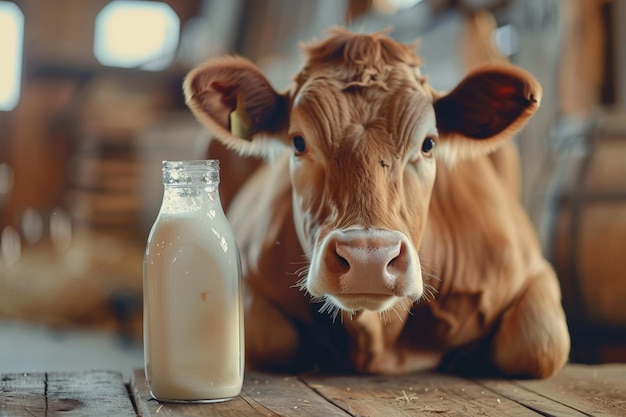
Did you know there's something called the raw milk fast where people only consume and drink raw milk for up to 30 days?
Raw milk is a complete food that comes with natural hormones which play a role in the growth and metabolism of both humans and animals.
Raw milk fasts can be used to improve your health and cleanse your body.

This is Sarah the Healthy Home Economist doing a 3 day milk fast.
Did you know great ancient physicians like Hippocrates used raw milk to heal a wide range of health issues?
In fact, so did the Mayo clinic about a hundred years ago - along with sunshine. It can't get any simpler than that!
There are lots of stories about how raw milk has helped people with their health issues. I have personally experienced and witnessed this myself.
I love drinking raw milk and I drink gallons of the stuff every month.
In fact, I prefer drinking raw milk over water most of the time because it provides me with important electrolytes along with healthy fats that keep me hydrated.

Did you know drinking raw milk benefits include building stronger teeth and bones?
- I noticed that when I gave raw milk to my daughter when she was a youngster - she did not have any dental cavities.
It was only when I stopped because of the difficulty in finding raw milk that she began to develop dental problems.
Raw milk nutrients that are destroyed by pasteurization.
Organizations like the Weston A. Price Foundation say that the nutrients in raw milk as well as drinking raw milk benefits will be destroyed by the heat of the pasteurization process.
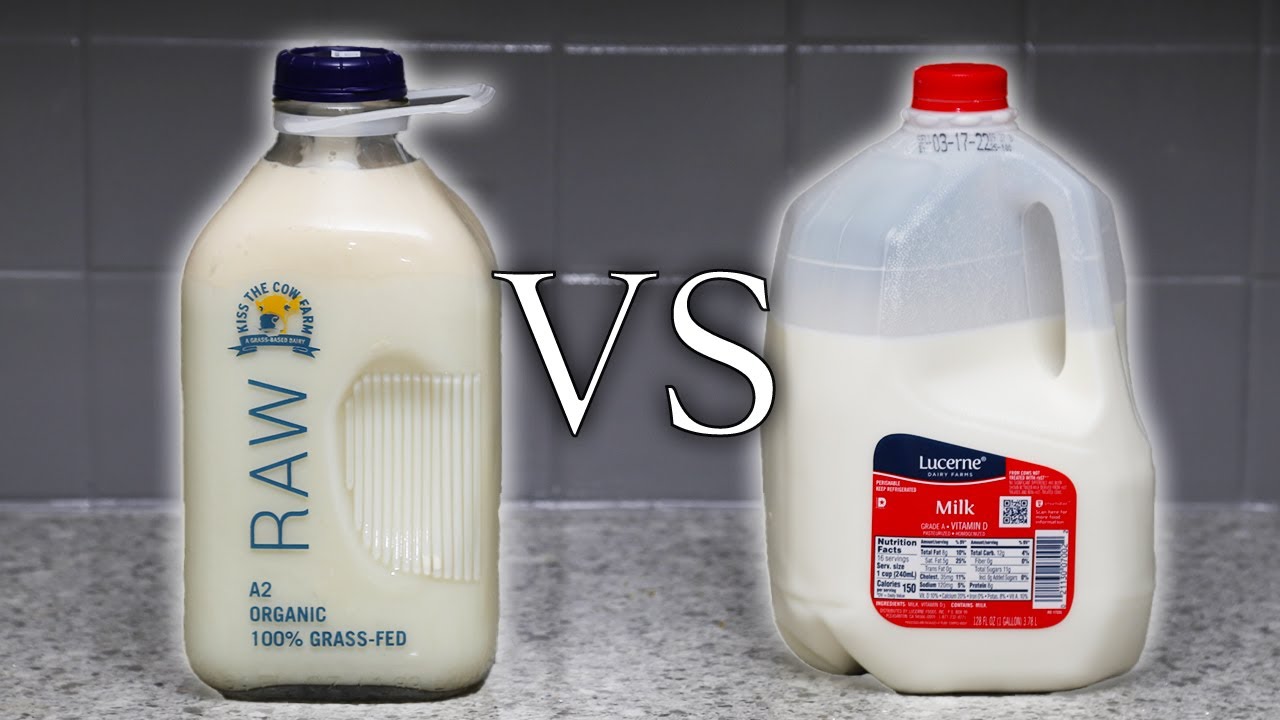
Pasteurization destroys all of the beneficial bacteria, enzymes, vitamins B6, B2, B12, and vitamin C in raw milk.
Negatively affects other vitamins, proteins, minerals, growth hormones, antioxidants, healthy fats, and fat soluble vitamins (A, D, & E).
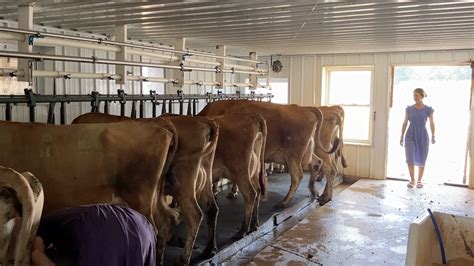
Advocates for raw milk say that raw milk can be produced safely and I totally agree with them. I have been drinking raw milk for over a couple of decades now!
However, agencies such as the Centers for Disease Control, the Food and Drug Administration, and numerous other worldwide regulatory agencies say that pathogens from raw milk make it unsafe for us to consume.
I guess it all comes down to your knowledge on the subject, your very own experience, and who your going to believe is telling you the truth.
Do your own research is all I'm saying.
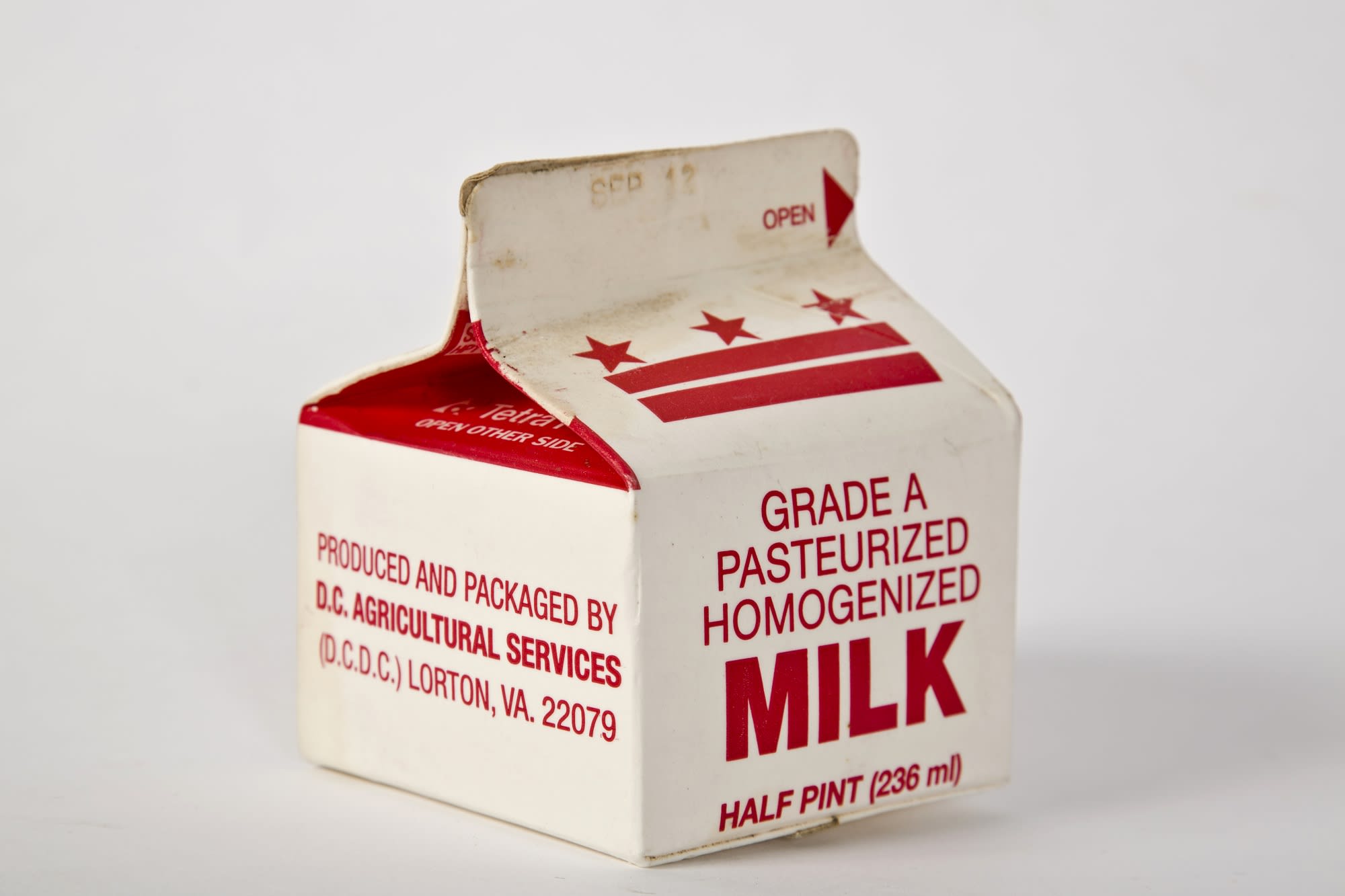
The only time that I got really sick from drinking milk was from the pasteurized milk at my daughter's elementary school.
It was pasteurized low fat milk that I got with my school lunch because I happened to be working at the school at the time.
As far as I can tell, there are way more cases of people getting sick from pasteurized milk compared to drinking raw milk.
Pasteurized milk is a nutrient deficient milk that has been linked to many health issues like heart disease, diabetes, osteoporosis, and inflammation.
In my opinion, pasteurized milk should not be in the same category as raw milk because pasteurization destroys or damages too many of milk's nutrients and benefits.
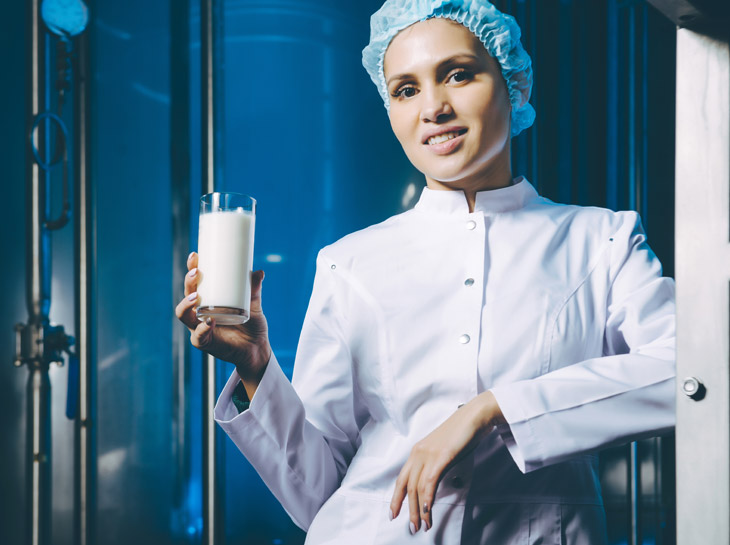
While pasteurization may kill dangerous bacteria, it will also kills off all of the good bacteria.
Drinking raw milk benefits include providing probiotics: some of the same ones that big dairy companies are now selling you in your yogurt and in other dairy concoctions.
Supporters argue that raw milk is just as safe as the dairy it comes from. They say if the cows are healthy and the dairy is spotless, raw milk is far safer than drinking pasteurized milk.
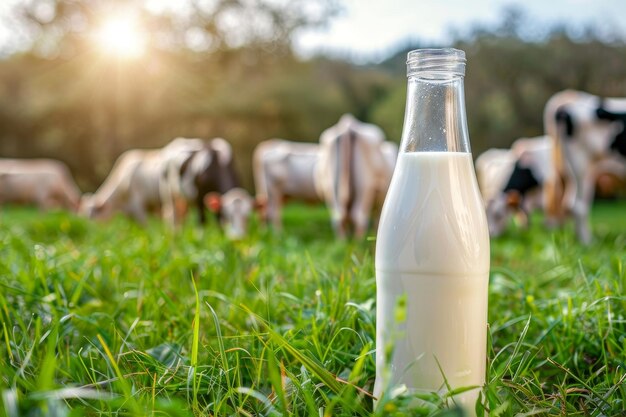
One reason is because of the beneficial bacteria naturally found in raw milk which makes it harder for harmful bacteria to grow.
- Accurate testing is also available now to detect the presence of harmful bacteria.
Did you know that pasteurization neutralizes digestive enzymes that help you to digest milk's nutrients?
- Your pancreas will have to work much harder when drinking pasteurized milk!
Did you know pasteurized milk is almost always homogenized?
Homogenization is a high pressure process that breaks up fat globules in cream to a much smaller size.
This prevents the cream from rising because the cream becomes evenly distributed into the milk with the homogenization process.
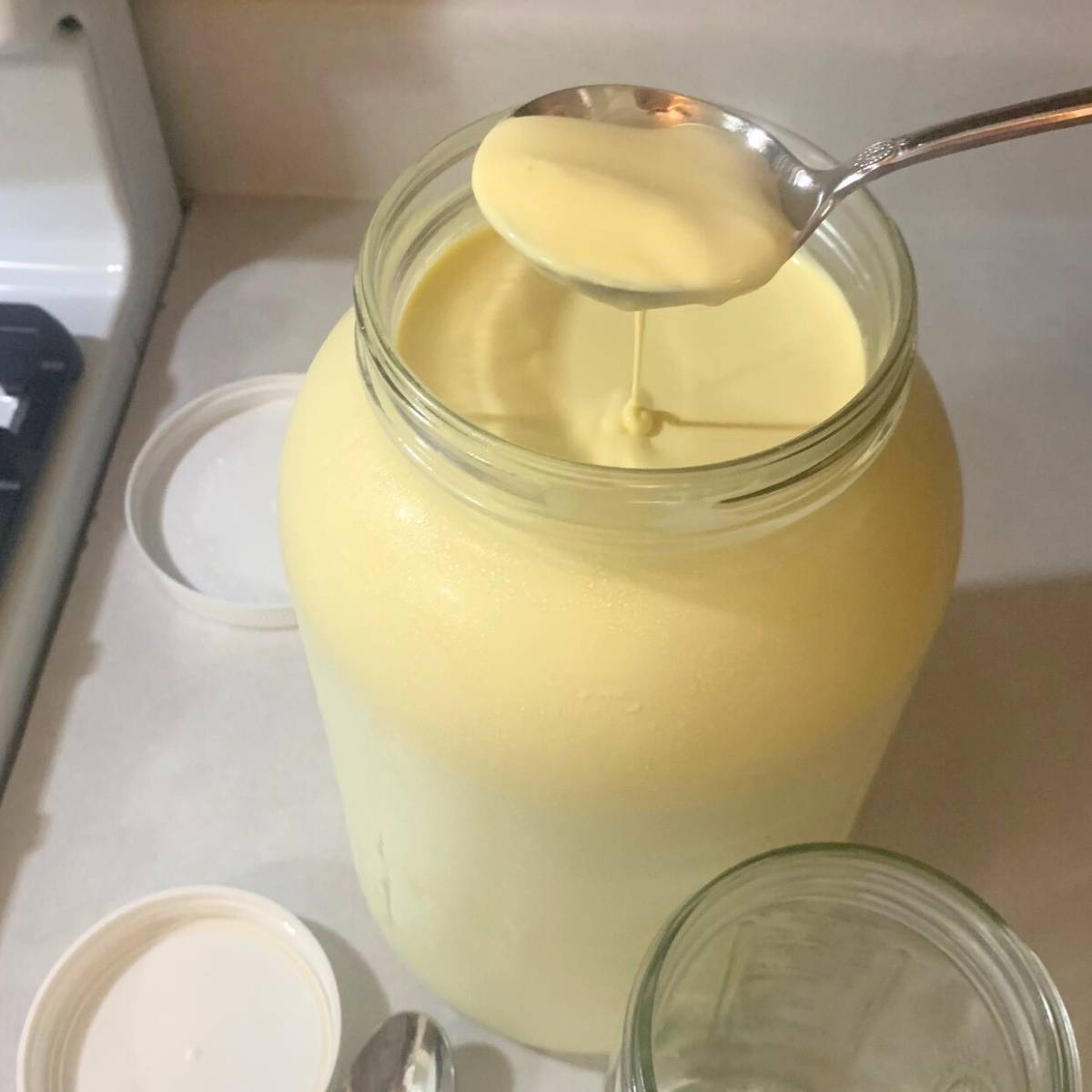
Milk that comes straight from the cow contains cream that rises to the top of the milk not too long after milking.
Milk that was not homogenized will have a distinct creamline.
All you have to do is shake it up or stir before pouring yourself a glass for a consistent whole milk.
Homogenization will give milk a more stable and uniform appearance, but looks can be very deceiving as homogenization has been called out for starting heart problems.
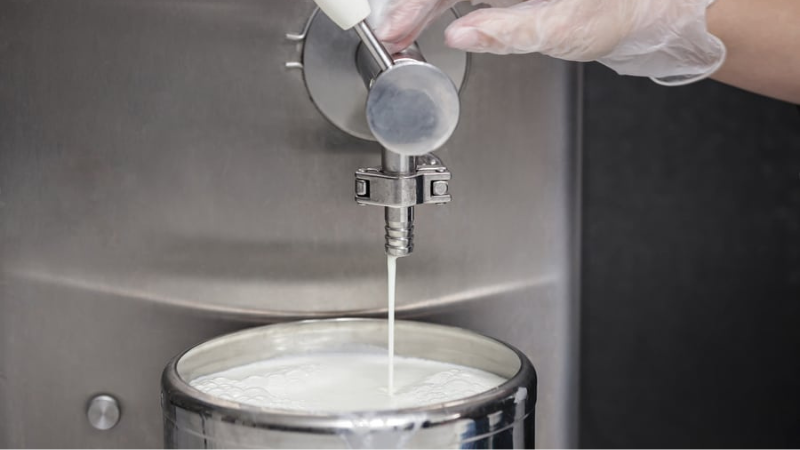
Homogenization of milk started in the 1930's and 1940's which "coincidentally" are the decades where the rise in atherosclerotic heart disease seem to begin.
However, just to be fair it's also around
the same time that vegetable oils began to replace the healthier
saturated fats in people's diets.
The homogenization process as the cause of the sudden rise in heart disease is a theory developed and studied by Kurt A. Oster, MD from the early 1960's to the mid 1980's.

It's thought the homogenization of milk fats creates dysfunctional fats which may result in the scarring of your blood vessels followed by increased cholesterol patches, followed by clogged arteries.
It's just something to consider - buyer beware.
Different types of pasteurized milk: vat or batch, regular, ultra, and ultra-high.
Learn the many different ways that milk is pasteurized these days and
what method may be the best for getting some benefits. I would avoid any milk with the word ultra in it.
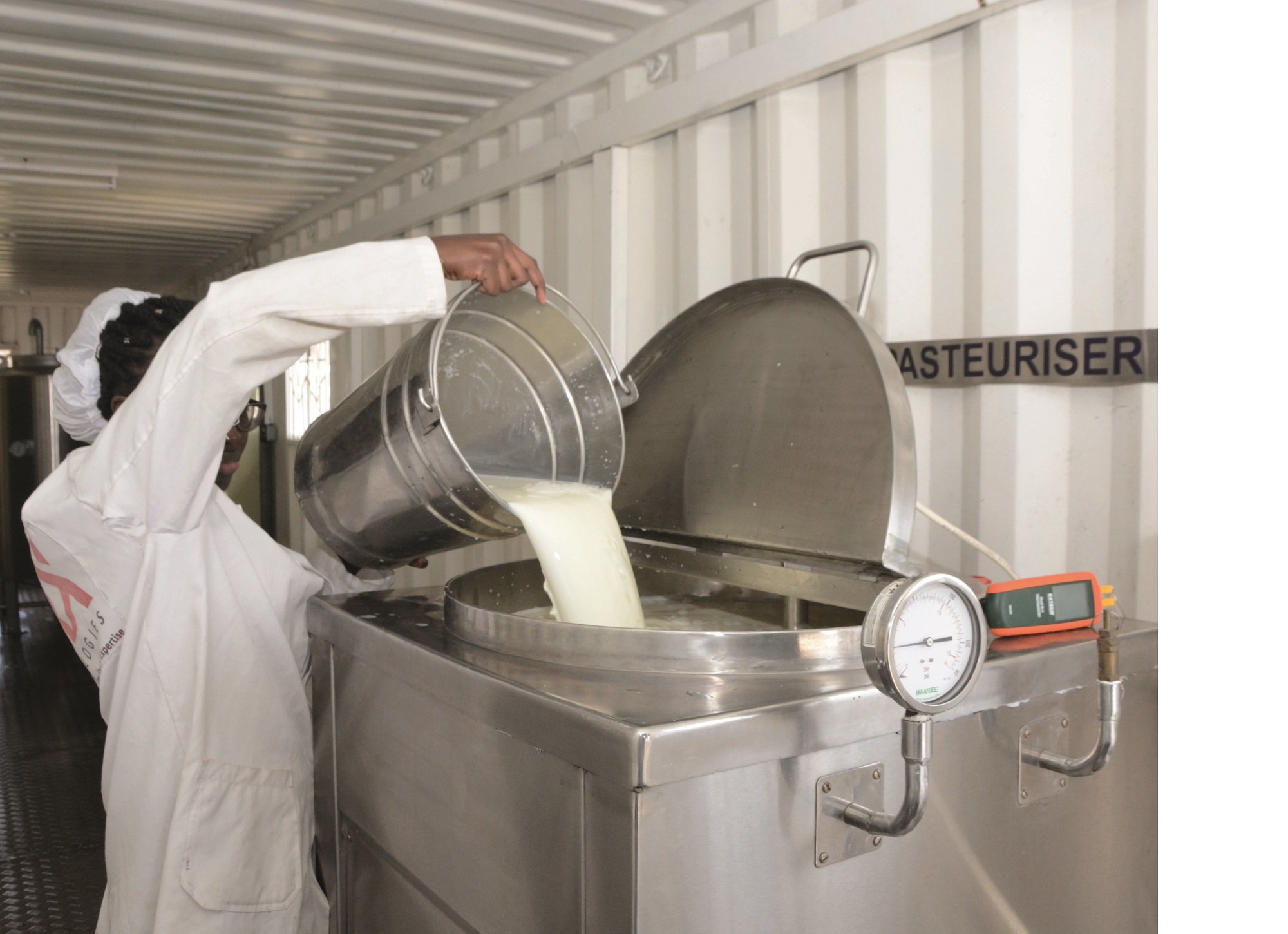
Vat or batch pasteurization is just one of several ways to pasteurize milk.
With this process milk is gradually heated in smaller batches to 145 degrees F. and held at that temperature for a minimum of 30 minutes. Then the milk is rapidly cooled.
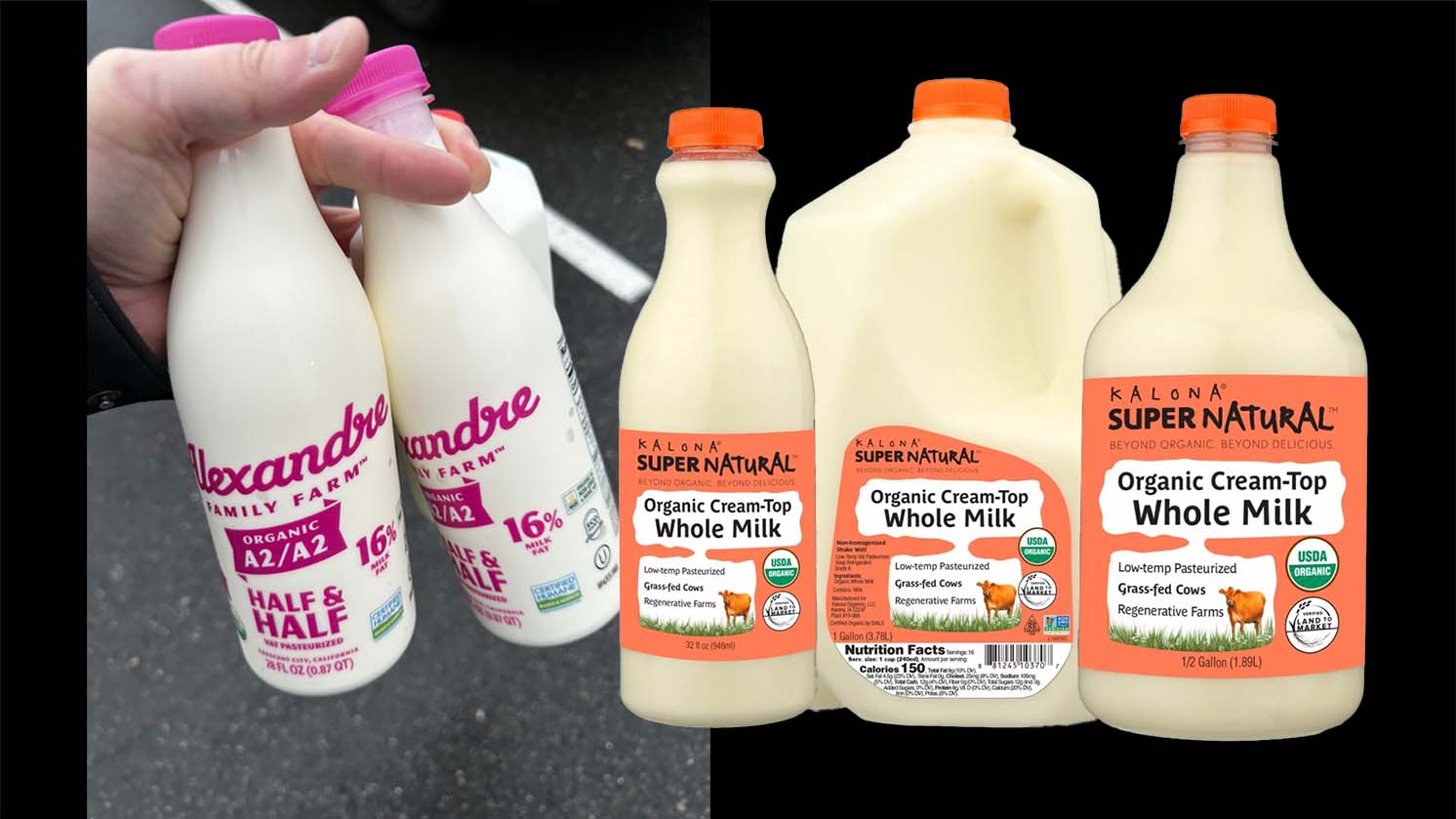
More nutrients are thought to be preserved with this pasteurization method and vat pasteurized milk is usually not homogenized.
This is considered to be a low temperature pasteurized milk and usually costs more than other types of pasteurized milk. Fortunately, it's not that hard to find these days at local health food stores.
Regular pasteurization heats larger amounts of milk to a minimum of 162 degrees F. for at least 16 seconds and then it's rapidly cooled.
This type of pasteurized milk is almost always homogenized.
And it is becoming harder and harder to find now that most commercial dairies usually ultra-pasteurize their milk.
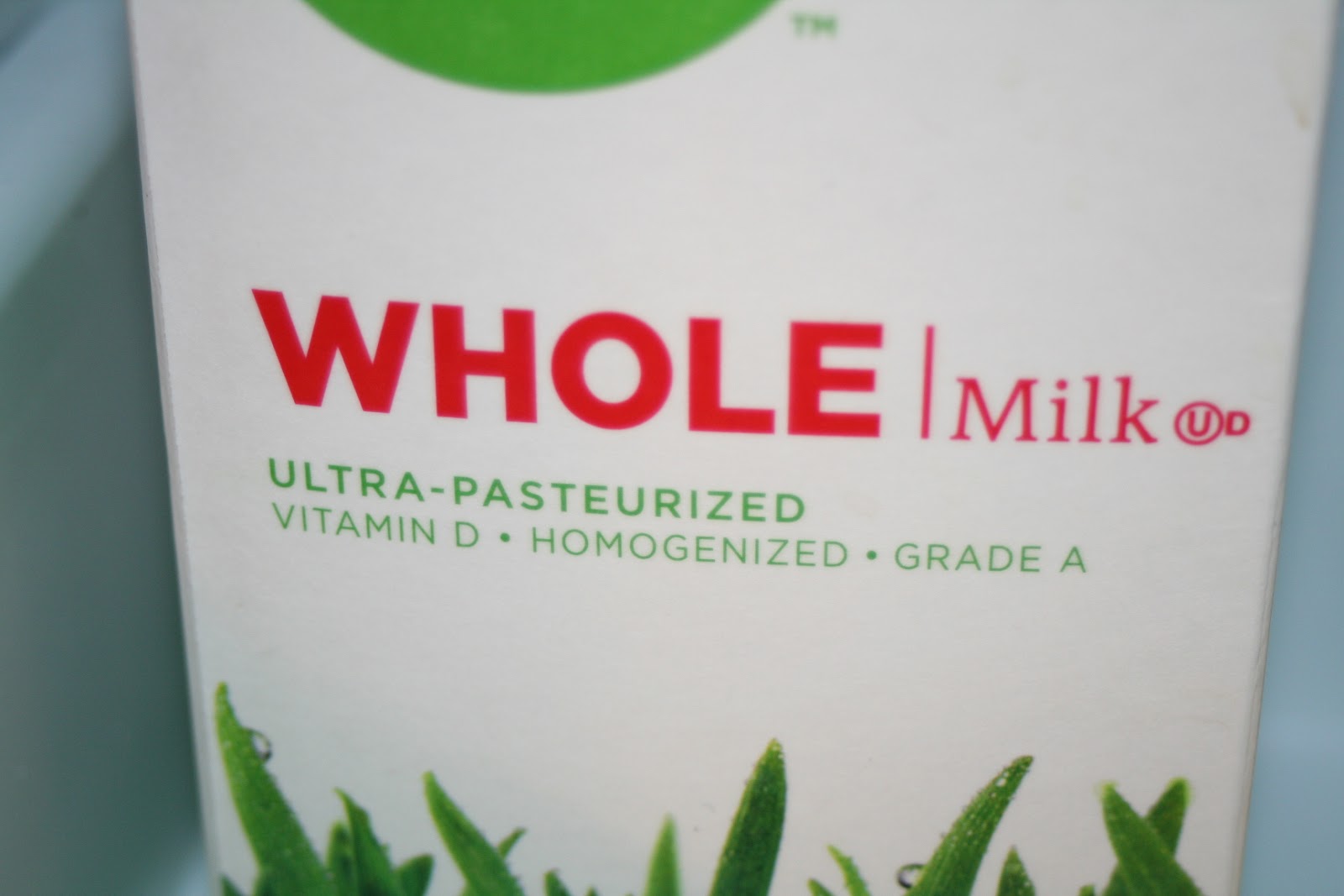
Ultra-pasteurization heats large amounts of milk to a minimum of 280 degrees F. for 2 seconds and then it's rapidly cooled.
Ultra-pasteurized milk is always homogenized.
Ultra-pasteurization will also create MSG - a Neurotoxin.
Ultra-high temperature milk is heated to temperatures between 275 and 300 degrees F.
Ultra-high temperature milk is always homogenized.
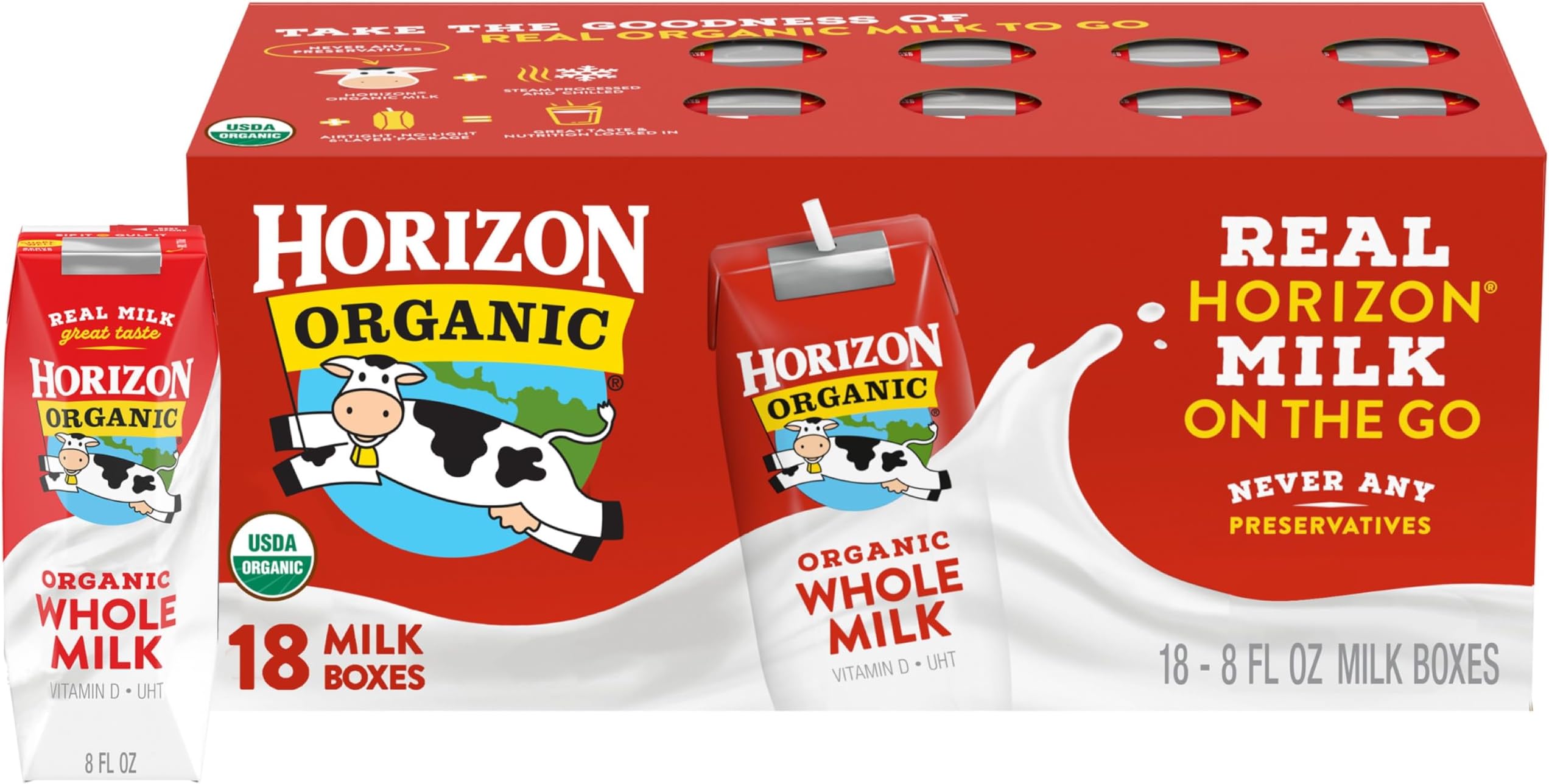
Both ultra-pasteurized and ultra-high pasteurized milk are shelf-stable and do not require refrigeration before opening.
Heating milk to very high temperatures destroys many of the raw milk benefits and nutrients. And it also makes milk much harder to digest!
Pasteurization greatly extends the shelf life of milk, but will also greatly decreases the nutrition found in A1 or A2 raw milk.
Other factors that increase or decrease the nutrient density of raw cow's milk.
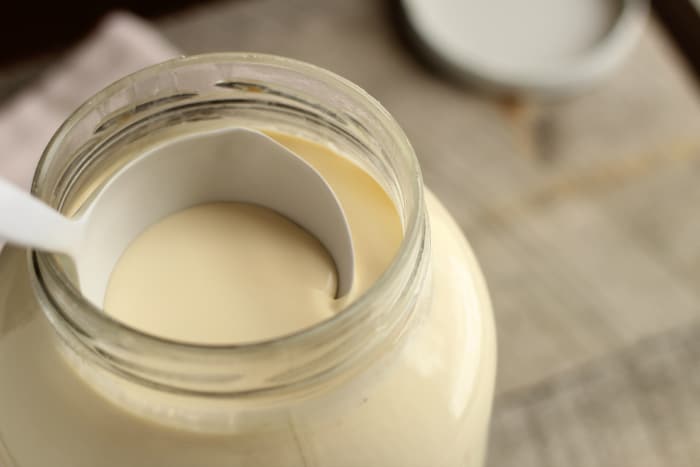
Dairy cows which primarily graze on lush green pastures all day (that is free of toxic chemicals) will produce the most nutrient dense raw milk.
Nutrient dense raw milk should have a yellowish hue or creamy color especially during the spring time when pastures are greener and have more beta-carotene.
Raw milk that is too white in color is an indication of cows not being raised on lush green pastures and this milk will not have the same nutritional value.
Did you know you can give cows healthy treats like organic apples, carrots, turnips, and pumpkins?
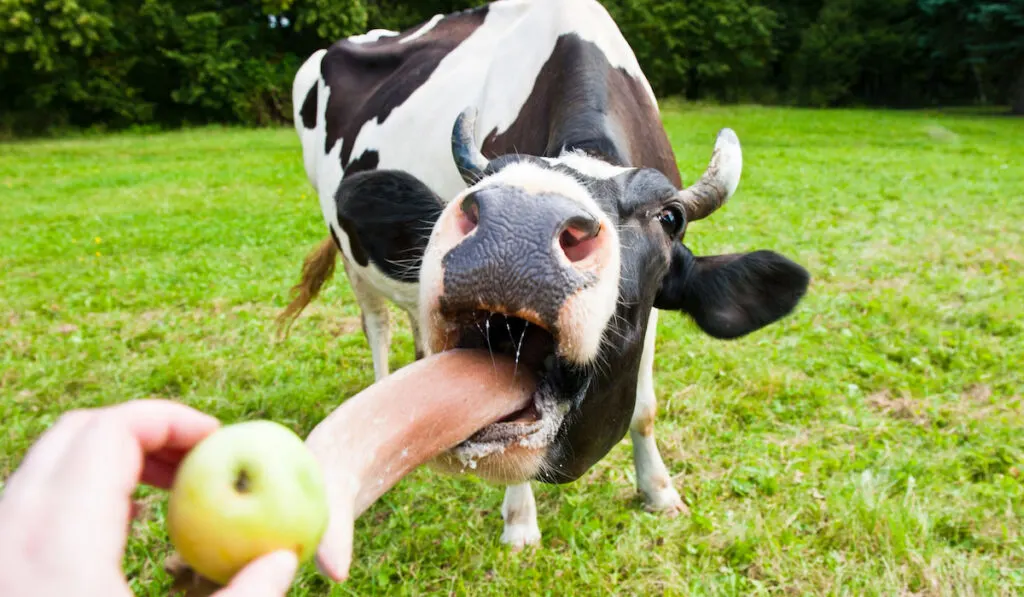
Often to add more energy and nutrition, grains are given during milking time to supplement a dairy cow's diet.
I don't really have a problem with that anymore as long as the grains are pesticide and herbicide free.
It's better than starving a dairy cow which I have seen - just so they could call the cow 100% grass fed.
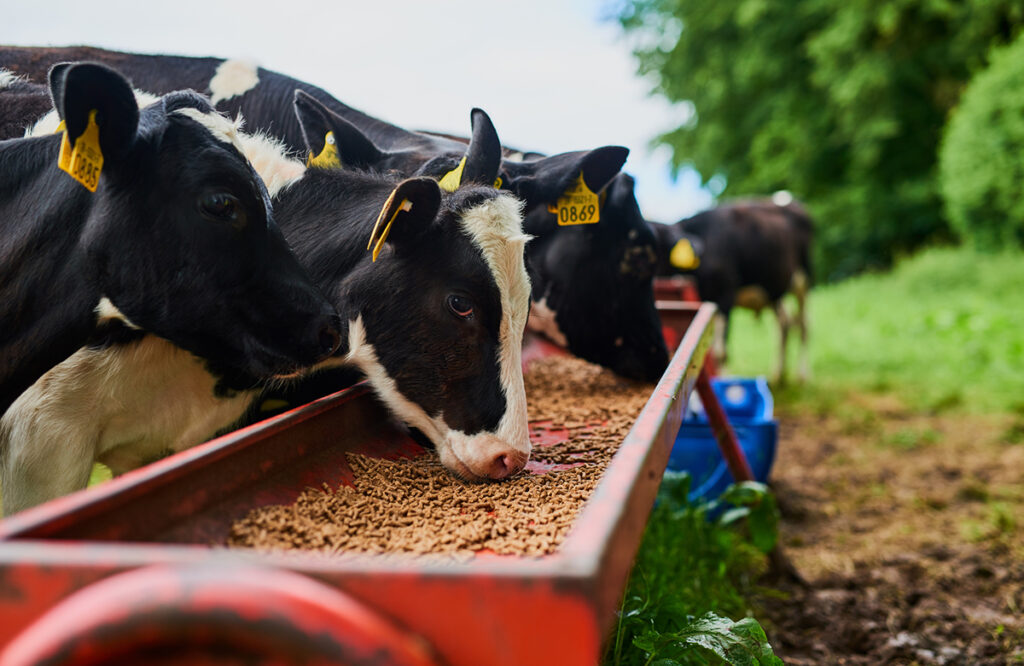
However, I'd stay away from milk that comes from dairy cows which are fed too many grains, soy, and corn. Soy and corn in particular are know to be GMOs which are sprayed with a lot of herbicides.
- Nutrients like vitamins A, D, and K2 will completely disappear or diminish when dairy cows are fed commercial feed that contains GMOs, cottonseed meal, waste products, and other toxic ingredients.
Cows that are confined, fed commercial feed, and are not able to graze on healthy pastures will not be very healthy. They are commonly given drugs like antibiotics to keep them alive.
Also, beware of cows that are given bovine growth hormones such as rBGH or rBST to increase their milk production. Because these growth hormones will negatively affect your hormones!
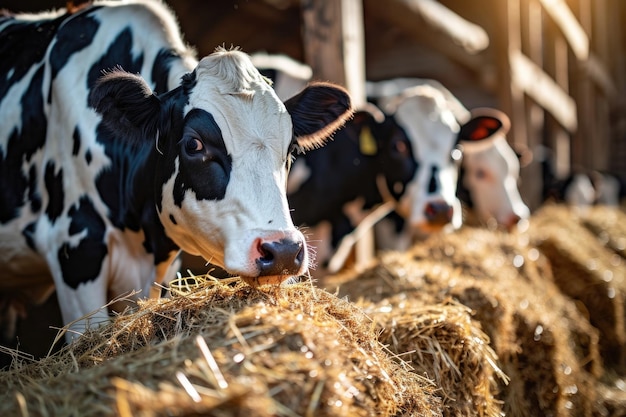
Cow's diets especially during the winter time are often supplemented with hay and silage. BTW, a cow fed hay will be considered grass fed.
Hay and silage should be free of toxic herbicides and pesticides because this will be passed on to you.
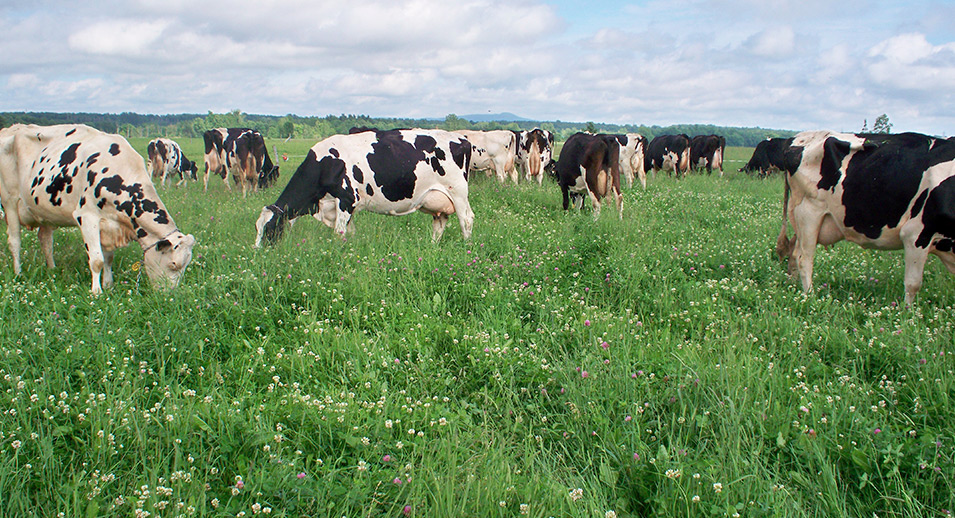
The bottom line: A2 raw milk is important, but it may be just as important to drink raw milk that comes from healthy cows primarily raised on green healthy pastures.
Always remember, the more lush and green the grass - the more nutrient dense the raw milk will be.
Best dairy cow breeds: best A2 cow, most popular dairy breed, and where to find A2 raw milk.
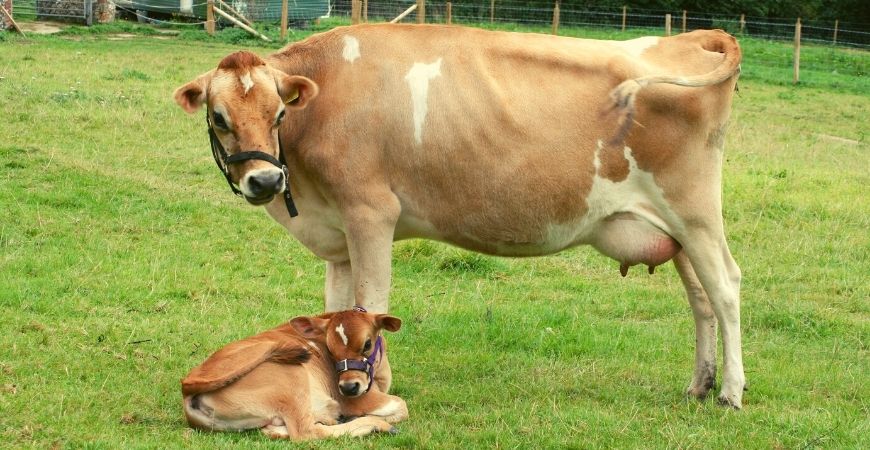
The best A2 dairy cow breed is hands down the Jersey.
Jerseys have a higher percentage of A2 genes.
This old fashioned breed produces milk with a higher concentration of A2 beta-casein protein.
Jerseys seem to originate from the Island of Jersey which is off the coast of France, but are also associated with Great Britain.
Jerseys are known to be intelligent and can adapt to a wide range of climatic as well as geographical conditions. They are also excellent grazers.
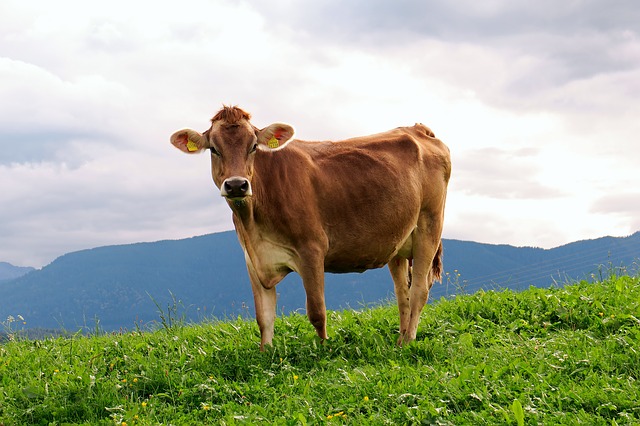
I love the Jersey cows with their big eyes and cute ears! Jerseys will be mainly brown in color with some variation in color.
- They are strongly noted for their white and black shading around their nose, eyes, and feet.
Jersey cow's milk may have the highest butterfat content and may be one of the most nutritious as well as delicious.
Did you know this high quality milk contains higher levels of protein, calcium, and other nutrients?
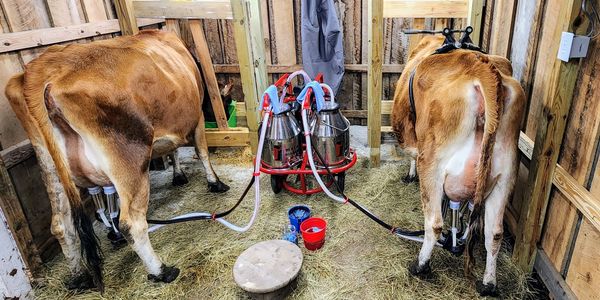
Jerseys are the smallest breed of dairy cow, but they have a longer average production life than other dairy cow breeds.
Jerseys are a great cow for smaller dairy operations and this cow can produce up to 6 gallons of milk per day.
I remember milking a Jersey on a farm in California that didn't have a calf in 5 years, but she was still producing high quality milk. That blew me away!
Jerseys are also a very sustainable cow breed with their smaller size and will consume fewer natural resources.
There may be studies that show that Jerseys are more efficient than Holsteins in converting feed into milk.
Most popular dairy cow breed: the Holstein.
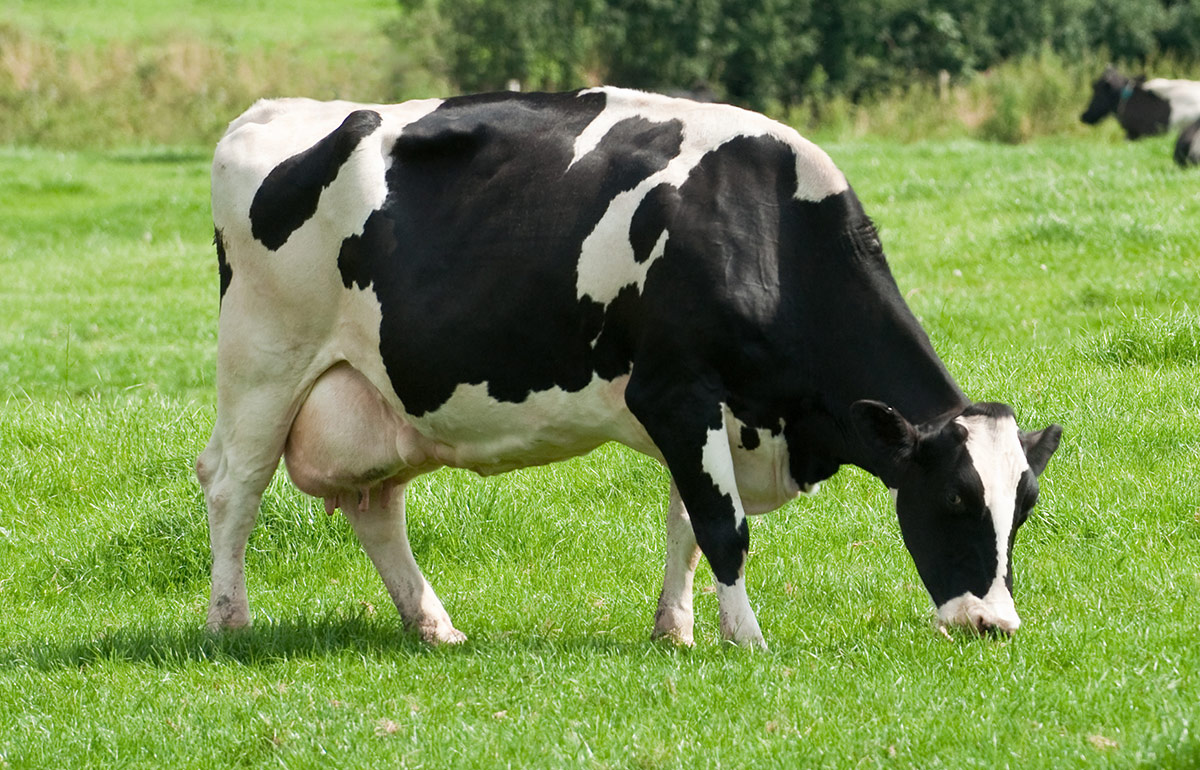
The most popular dairy cow breed is the Holstein.
Holsteins are a large dairy cow that are black and white in color (more rarely red and white).
This breed originated from European cows that were selectively bred in the Netherlands about 2000 years ago.
The original stock came from the black and white cows that belonged to the Batavians and Friesians.
The intermingling of these cows produced a very efficient and high producing dairy cow. Holsteins now make up the majority of dairy cows in America for this very reason.
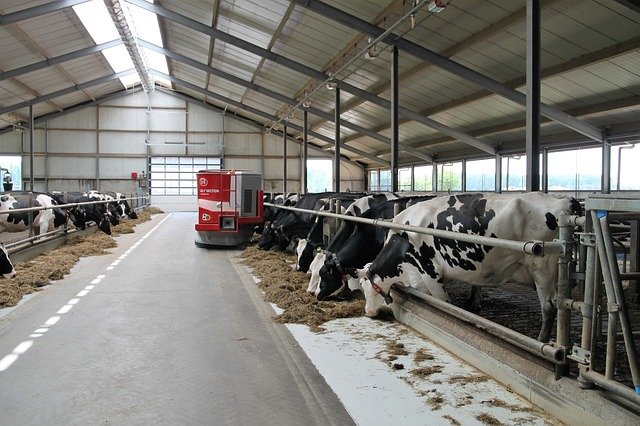
This very adaptable dairy cow can be raised on pastures and also in many mixed farming systems. They are very suitable for the dairy industry.
Holsteins are known to have more A1 genes which produce the A1 beta-casein protein. However, with the right breeding program you can create an A2/A2 Holstein cow.
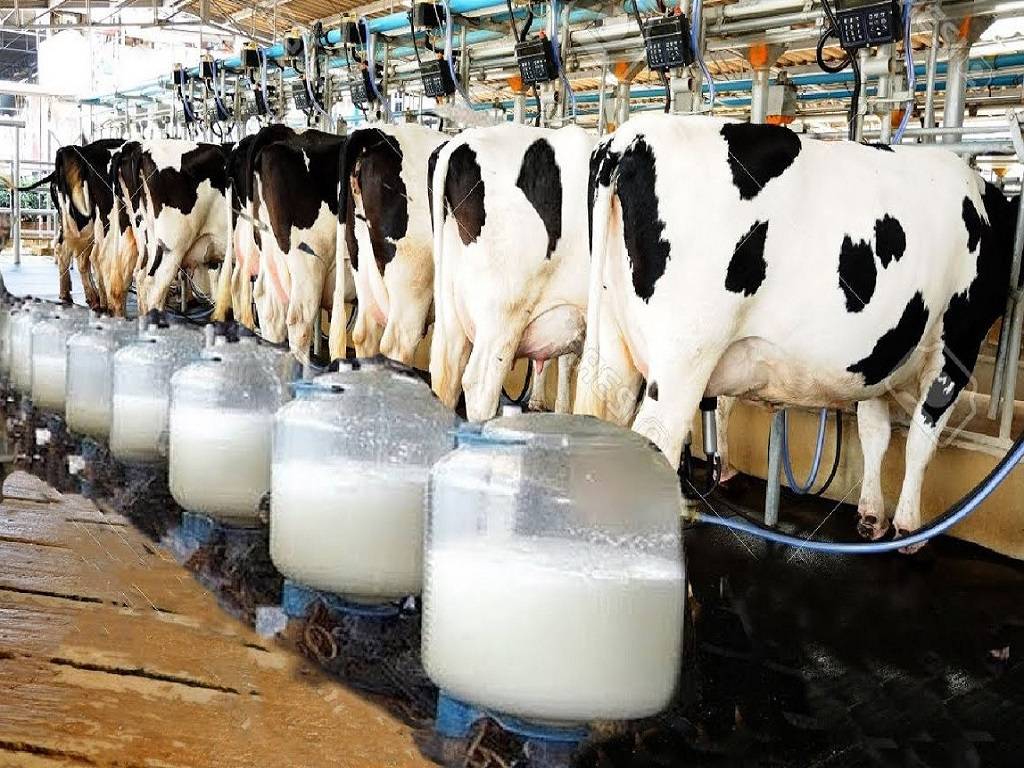
The main reason that Holsteins are so very popular is that they can produce more milk on less feed than other large dairy cows.
Holsteins can produce close to 9 gallons per day per cow!
However, their milk will have a lower butterfat and protein content than other dairy breeds.
Holsteins are usually only productive for about 4 to 6 years.
Where to find A2 raw milk: health food stores, coops, farmer's markets, and farms.
Be aware that the regulation of the commercial distribution of packaged raw milk will vary from state to state.
In a few states, you will be able to find A2 raw milk at health food stores, coops, and at farmer's markets.
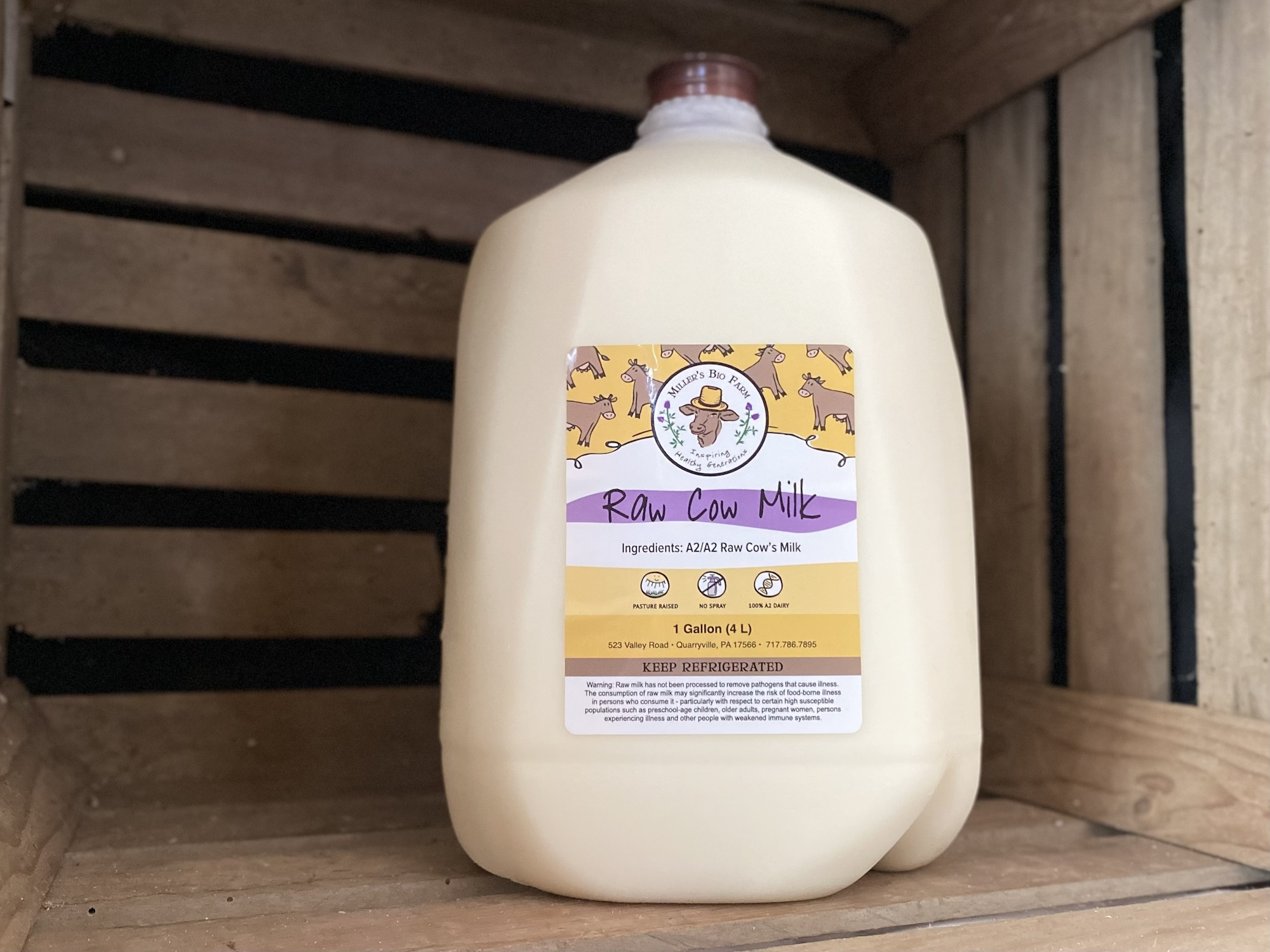
In many states, you'll be able to buy A2 raw milk straight from
the farm.
A2 raw milk is sometimes distributed through a cow share program, wherein the consumer owns a share of the dairy animal or of the herd.
- Therefore, your legally consuming raw milk from your own cow.
Be aware that raw milk can be marketed for "pet consumption only" in states where the sale for human consumption is being prohibited.
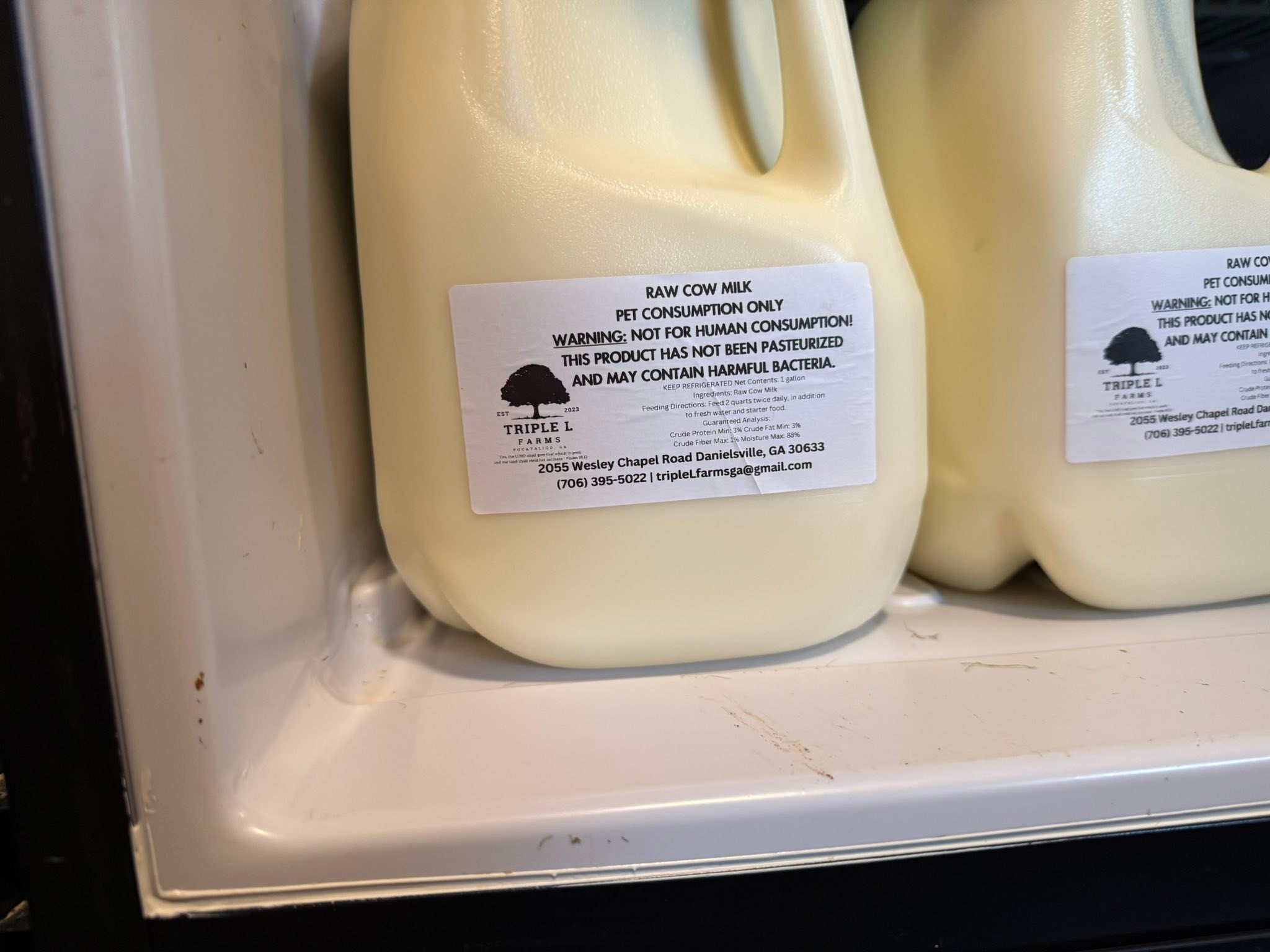
The label may come with a warning on it - which is similar to when you go to a restaurant and order a rare steak or raw fish.
In my opinion, this is because of the bias coming from many agencies.
To find A1 or A2 raw milk in your neck of the woods to experience drinking raw milk benefits - go to www.Realmilk.com.
- Home
- Eating Raw Foods
- A2 Raw Milk


